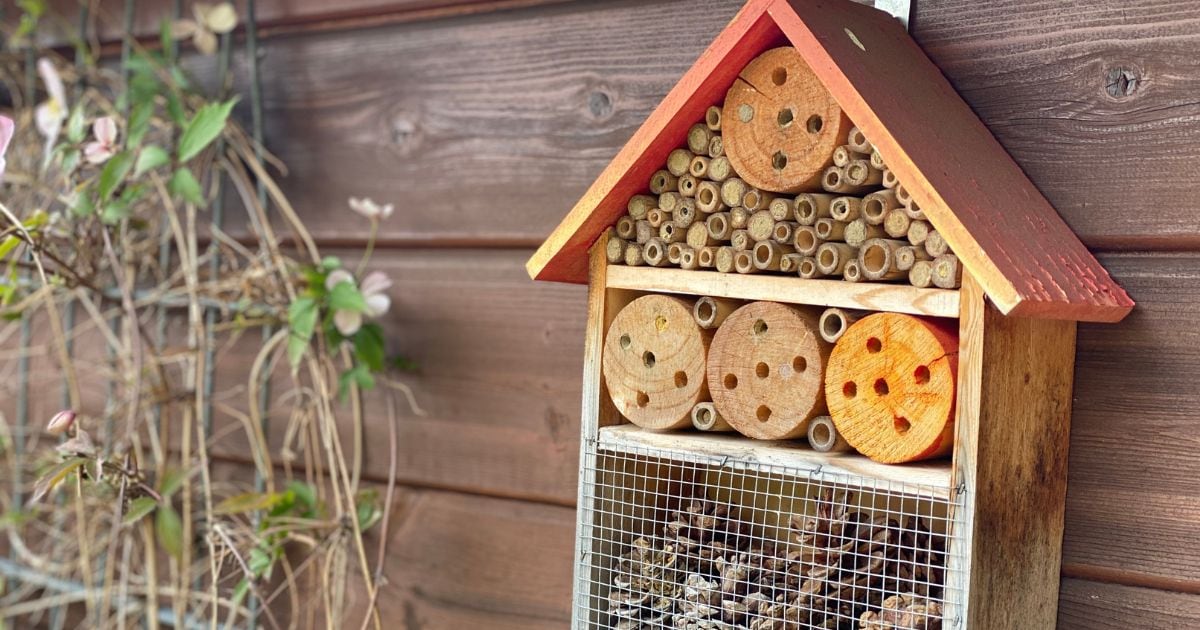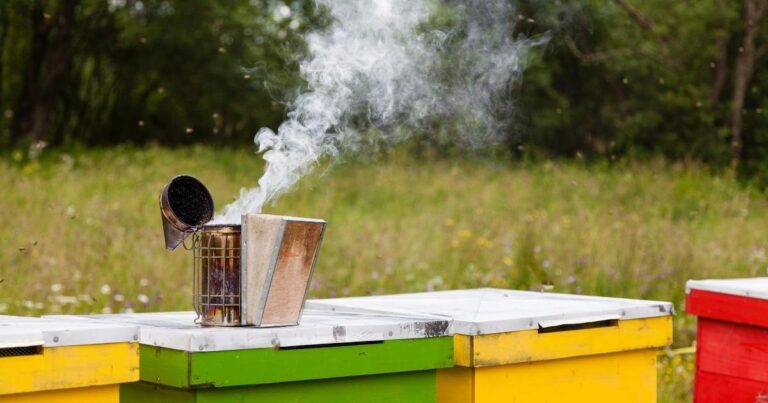Vacancy At The Bee Hotel
Did you know there’s such a thing as a bee hotel? These human-made bee homes can be made from a range of materials.

I still remember the first time I saw a bee hotel. Perhaps the cutest home around, it looked like a fairy or doll’s house with a peaked roof and the most carefully arranged and packed selection of cylindrical matter.
Bee hotels are human-made bee homes made from different materials such as bamboo, straws or blocks of wood with holes drilled into them. The front and back of the house are open, and each tiny hole is like a tubular bed in a high-rise made for insects. These hotels can be incorporated into any garden and are effectively a safe space for solitary bees to rest, breed and rejuvenate.
As I mentioned, these hotels are made specifically for solitary bees, especially native bees; did you know that over 99% of Australia’s 1,700 native bee species are not social?
While honey bees are eusocial and rely on one another and their colony to survive, this vast majority of native bees are solitary and usually build their homes in tiny narrow burrows made by digging nest tunnels in the ground, excavating holes in old stems of decaying timber, and taking over pre-existing, abandoned holes left by other insects. Some examples of solitary and semi-social bees in Australia that will make good use of a bee hotel are blue-banded bees, leaf cutters, reed bees, great carpenter bees and metallic carpenter bees.
As we have recently been chatting about why native bees are important yet forgotten pollinators, the bee hotel is a fantastic way to help our solitary friends. Hotels can be very simple, such as old plastic bottles with twigs pushed inside, or bricks with holes left in the garden; they can also be elaborate, beautiful pieces of art, like the fairy homes I described at the beginning of this post.
Making a more elaborate bee hotel can be a wonderfully creative and educational exercise for the whole family that will help support local native bees in your garden. And there are more selfish reasons to help these wild friends too, as native bees can pollinate the flowers, plants, vegetables and natives in your garden.
In fact, native bees may actually be better pollinators than honey bees in some ways as they don’t moisten the pollen they carry on their legs, meaning it is more likely to fall off and pollinate flowers and plants in your garden. They also have some rather nifty tricks up their sleeves, such as buzz pollination, where they pulsate at a certain frequency to release extra pollen from their chosen plant!
So why not help out native bees in your area with a beautiful little bee hotel in your backyard? It’s a wonderful way to get closer to the native ecosystem, and a tool for witnessing insect behaviour. And although it is always important to make sure children or those suffering from bee-sting allergies are not stung, these solitary and semi-social species are not aggressive as they do not have a queen or large nest to defend. So, light up the vacancy sign, and give native bees a bed for the night!


